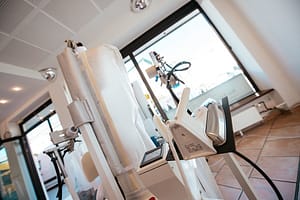Buying toner cartridges should be straightforward, right? You’d think so, until you’re staring at a shelf full of codes, wondering which one your printer actually needs. For many, it’s easy to confuse toner cartridges with ink cartridges. But making the wrong choice could cost you time, money, or even damage your printer.
Whether you’re stocking a home office or managing print supplies at work, here’s a clear guide to help you choose the right toner cartridge without second-guessing.
Understand the basics: Toner cartridges vs. ink
First things first, if your printer is a laser printer, it uses toner cartridges, not ink. Unlike ink, which is liquid-based, toner cartridges are a dry powder that’s melted onto paper using heat during printing. It’s ideal for fast, high-volume printing, especially for text-heavy documents.
So before anything else, double-check that you’re indeed using a laser printer. If you’re unsure, search your printer model online, the product description will clarify it.
Step 1: Identify your printer model
The easiest and most reliable way to find the correct toner cartridge is by knowing the exact model of your printer. It’s not enough to know that it’s a “Brother” or “HP” printer. Each brand has dozens of models, and each might require a unique toner cartridge.
You can find the model number:
- Printed on the front or top of your printer
- On a sticker near the rear or bottom
- In the settings menu or printer dashboard
Write it down or snap a photo for reference.
Step 2: OEM, compatible, or remanufactured, what’s the difference?
When you shop for toner cartridges, you’ll come across three main categories:
- OEM (Original Equipment Manufacturer): These toner cartridges are made by the printer brand itself (e.g., Canon, HP, Brother). They’re reliable and usually hassle-free, but they cost more.
- Compatible: These are new toner cartridges made by third-party companies. They aren’t made by the original brand but are designed to work just like OEM versions. The quality varies between manufacturers, so reviews and return policies matter.
- Remanufactured: These are genuine OEM toner cartridges that have been used, cleaned, refilled, and tested. They’re a more eco-friendly option and often more affordable, though again, the supplier’s reputation makes a big difference.
If you’re printing important business documents or need consistent quality, OEM is usually the safest route. But for general printing, good-quality compatibles or remanufactured options often get the job done at a lower cost.
Step 3: Match the cartridge code, not just the brand
Each printer model is compatible with specific toner cartridges, and these cartridges have their own alphanumeric codes. For example:
- HP LaserJet Pro M402dn uses CF226A.
- Brother HL-L2350DW uses TN-2430
- Canon imageCLASS LBP6230 uses Cartridge 126
Even within the same brand, two printers can require different toner cartridges. Using the wrong one won’t work, even if it fits physically. Always confirm the correct cartridge code in your printer’s user manual or on the manufacturer’s website before buying.
Step 4: Choose the right page yield, standard vs. high-yield
Most toner cartridges are available in standard-yield and high-yield (also called XL) versions. The difference lies in how many pages you can print before needing a replacement.
High-yield cartridges usually offer better value per page but cost more upfront. If you print regularly, especially in an office setting, buying high-yield toner cartridges makes sense. For occasional home printing, standard might be enough.
Step 5: Consider colour requirements
If you use a colour laser printer, you’ll need to buy multiple toner cartridges, usually four: Black, Cyan, Magenta, and Yellow (CMYK). These are often sold separately but can sometimes be found in value packs.
Be sure to check:
- Which colour(s) are running low?
- If your printer requires a drum unit separate from the toner
- Whether you can replace just one colour or need a full set
Also, if your work involves graphics or colour-rich documents, it may be worth sticking with OEM cartridges to avoid colour inconsistency or fading.
Step 6: Buy from trusted retailers
While toner is available everywhere, from online marketplaces to office supply stores, where you buy matters.
Look for:
- Clear return policies
- A track record of good customer reviews
- Detailed product listings that mention your exact printer model
Avoid too-good-to-be-true prices from unknown sellers, especially if the listing lacks brand details or packaging photos. A cheap cartridge that leaks or fails to work can end up costing more in the long run.
Final thoughts
Choosing the right toner cartridge isn’t complicated, but it does require attention to detail. Knowing your printer model, confirming the correct cartridge code, and understanding your printing habits go a long way in helping you make the right purchase.
Whether you opt for original or compatible cartridges, prioritise consistency and reliability over just price. A good cartridge should give you sharp prints, minimal mess, and peace of mind every time you hit “Print.”






Leave a Comment